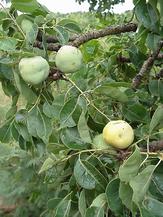
Sclerocarya caffra or marula’s common names include Inkanyi, marula, Umganu, mufula and morula. The marula tree is a medium to large deciduous tree with male and female flowers on separate trees.
Pregnant women use the bark of the respective species to determine the gender of their unborn babies - e.g. a preparation of the powdered bark from the male tree is taken for a male child. Umganu (marula) is a tree used by the Zulu people specifically for the traditional healing of mumps (uzagiga).
The patient has to go to the marula tree and hit their cheek on the tree while saying ‘zagiga, zagiga ngiyeke’ (‘go away mumps’) three times. It is said that the mumps will disappear within three days. Other medical uses include taking a decoction of the bark to heal dysentery, diarrhea, rheumatism and for the prevention of malaria.
The bark is considered to be a treatment for hemorrhoids and a hot infusion of the bark is drunk as a tonic for weakness or fatigue. Ropes are made from the layer beneath the bark, while the wood is used for carvings, furniture, drums and yokes.
The marula tree grows from Ethiopia south to KwaZulu-Natal in South Africa and is a familiar site in the Ba-Phalaborwa region of the Limpopo province. The fruit and nut have been used since ancient times for its nutritional value - it is high in vitamin C and minerals.
Marula fruit ripens from January to April when the ripe fruit falls to the ground. A mature tree can yield up to 500kg of fruit in a year. The fruit is eaten fresh or processed into drinks and jams. The fruit are collected, washed and cut open and the nut removed. The fruit is cooked until the water changes colour and is then removed.
The remaining water is then further processed to a jam, which is then packed in sterilized glass jars and sealed. Marula jam can have a shelf life of up to a year if well sealed. The marula nuts are edible and usually roasted.
They are very nutritious and contain about 25% protein as well as calcium (Ca), magnesium (Mg), phosphorus (P) and potassium (K). The nut is crushed to remove the seeds.
The shells of the nuts can be used as paving, as a mulch or to make fires. The cold-pressed oil is extracted from the seeds as it is rich in antioxidants and vitamins C and E, which is used in skin care. Fruit and leaves are used as animal feeds. The marula is a popular shade tree and grows easily from seed sown in washed river sand, but is very sensitive to frost. It is best planted in spring.
Medical Disclaimer
Information is for educational and informational purposes only and may not be construed as medical advice. The information is not intended to replace medical advice or treatment offered by healthcare professionals.By Marinda Louw
For bulk or Marula Fruit export enquiries please use the enquiry link below.